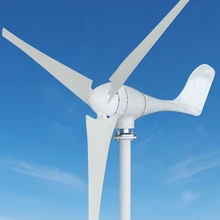
Why Wind Works
Wind Energy in Canada
Wind energy is one of the fastest growing major sources of new electricity around the world. In 2016, Canada’s wind generation grew by 702 MW spread among 21 new wind energy projects. In 2015, Canada’s installed capacity surpassed the 10,000 MW threshold, establishing the industry’s position as a mainstream source of cost-competitive and reliable electricity supply. This year, six per cent of Canada’s electricity demand is being met by wind power, enough to power over three million homes.
Every Canadian province is now benefiting from clean wind energy.
Interactive image courtesy of the European Wind Energy Association (EWEA)
Did You Know?
- Wind energy is growing in more than 90 countries around the world at an average annual rate of 22 per cent a year because governments, citizens and electricity system operators alike have found a reliable, clean, and safe form of energy … and at a good price.
- The Canadian Hydropower Association, Canadian Solar Industries Association, Canadian Wind Energy Association and Marine Renewables Canada came together with Clean Energy Canada to establish the Canadian Council on Renewable Electricity. The Council engages in research, collaboration and communications initiatives to encourage dialogue for increased use of Canada’s abundant renewable electricity resources. Download a copy of Powering Climate Prosperity: Canada’s Renewable Electricity Advantage for the Councils recommendations on steps Canada must take to prevent average global temperatures from rising above two degrees Celsius.
- The Trottier Energy Futures Project looks at the changes we can make today to build a low-carbon, sustainable energy future for Canada while taking into account economic, social and environmental concerns.
- Globally, a collaboration initiative of energy research is trying to understand how individual countries can transition to a low-carbon economy through The Deep Decarbonization Pathways Project.
How a wind turbine works
Wind turbines work on the same principle that allows airplanes to fly. The wind doesn’t push the blades, but passes over them. The resulting pressure difference between the upper and lower surfaces creates lift, which causes the rotor to turn.
As the blades of a wind turbine turn, the kinetic energy of the wind is converted into mechanical energy, which is transmitted through a drive shaft to an electrical generator in the nacelle. The resulting electrical current travels via underground cables to a substation, where it is converted to a higher voltage for the larger electricity transmission or distribution grid. From there, it’s delivered to the electric utility and customers.
Find out how a wind turbine works by using the Harness the Power of Wind interactive image at the top of this page.
- Wind energy is part of a “balanced energy diet” and is making a growing and positive contribution to our energy supply mix.
- Studies have shown that when a utility diversifies its power portfolio with the addition of wind energy, it can meet demands more reliably.
- Wind energy is a highly flexible form of electricity, and easily complements other sources of electricity such as hydro, solar or even natural gas.
- As more wind energy is added to the energy system the overall carbon dioxide emissions of the power grid will continue to drop.

Did you know?
- The blades typically start to turn when the wind speed reaches approximately13 km/h and shut down when the winds become too strong, usually around 90 km/h. That operating range means wind turbines produce electricity approximately 85 per cent of the time. How much they generate at any given point depends on the wind speed.
- Wind farms are designed to last 25 years or longer and modern turbines require very little maintenance.
- Often at the end of their life, wind turbines are “re-powered”, which involves replacing older equipment with newer technology; the re-powered wind farm will then last another 20 -25 years after that.
A balanced energy diet
Wind energy is a highly flexible form of electricity, and easily complements other sources of electricity such as hydro, solar and natural gas.

- Wind energy is helping to create a more modern, cleaner and flexible electricity system in countries around the world and here in Canada. With a world-class wind resource, we are just scratching the surface of our clean wind potential! Canada needs a variety of reliable, clean and safe sources of new energy to meet our growing electricity demand and to help reduce the impact of greenhouse gas emissions from our electricity sector.
- Studies have shown that when a utility diversifies its power portfolio with the addition of wind energy, it can meet demands without reducing reliability.
- As more wind energy is added to the energy system the overall air emissions of the power grid will continue to drop.
Did you know?
According to the Independent Electricity System Operator (IESO), wind energy’s contribution to the Ontario electricity system continues to climb. At approximately five per cent of the province’s electricity demand, Ontario was the first jurisdiction in North America to eliminate coal as a source of electricity generation.
Reliable power partner
Wind energy is a reliable power partner

- Large amounts of wind energy are already being reliably and cost-effectively integrated with the electricity grid; utilities around the world continue to recognize the value wind energy can play within a larger interconnected electrical transmission system.
- State-of-the-art wind forecasting techniques allow utilities and grid operators to anticipate and plan for increases or decreases in wind energy output.
- With wind forecasting, changes in wind energy output are factored into grid operations much like variations in demand – both change over a matter of 30 minutes or even hours (not a matter of seconds, such as when fossil or nuclear plants trip unexpectedly off line, or a tree falls on a transmission).
- Wind energy is a natural partner with hydro, Canada’s heritage energy asset. The wind blows strongest in winter when water reservoirs are lowest; water reserves are often highest when wind resources are typically lower.
Did you know?
- Based on real world operational experience, most electrical grids can obtain at least 20 per cent of their total electricity from wind energy without having to make substantial changes to the existing electrical grid. In fact, in some jurisdictions such as Denmark, wind has at times supplied 100 per cent of the electricity needs of the country.
- “The experience of countries and regions that already have a high wind penetration (from 5 per cent to 20 per cent of gross electric energy demand) has been that the existing reserves are deployed more often after wind power is added to the system, but no additional reserve capacity is required”. (Wind Power Myths Debunked, Milligan et al., IEEE, 2009 v. 7, no. 6’)
Resources
Follow these topics in more detail using the following resources
- The International Energy Agency released a new study, IEA Energy Technology Perspectives 2017, in June 2017. The study predicts that renewable electricity generation will grow by 36 per cent between 2015-21, making it the fastest growing source of electricity generation globally. Onshore wind energy generation will almost double over this period. One reason for the expected growth is that record-low contract prices for wind energy were announced in 2016. The study clearly shows that growth in wind energy as well as other clean energy sources will be necessary if the goals of the Paris Climate Change Agreement are to be realized.
- IRENA’s REsource provides easy and free access to the largest amount of renewable energy information and data to date. REsource enables users to have rapid access to country-specific data, create customized charts and graphs, and compare countries on metrics like renewable energy use and deployment. It also provides information on renewable energy market statistics, potentials, policies, finance, costs, benefits, innovations, education and other topics.
- In Ontario, the sustainable and economic integration of wind energy is being addressed by organizations such as the IESO and Ministry of Energy.
- Wind Power in Ontario: Track wind’s output!
- Perspectives for Policymakers – Integrating Wind Power Into the Electrical Grid
- UVIG’s Variable Generation Integration Library provides an overview and summary of wind integration studies from North America and around the world.
- Minnesota Department of Commerce: International Review of Policies and Recommendations for Wind Turbine Setbacks from Residences
- Electric Utilities and Wind Power – A Good Mix Fact Sheet by the American Wind Energy Association.

